
Article
Generational Leap, About Biquini Wax and Salón Silicón in Siembra
by Fabiola Talavera
At kurimanzutto
Reading time
9 min
The premises of kurimanzutto in Mexico City are divided into seven small galleries housing different artists and independent spaces. Siembra (“Sowing”) is a curatorial exercise that seeks to displace the usual space-time of exhibition programming by giving different invited projects the freedom to choose the theme and temporality of what they present. In its press release, kurimanzutto poses questions about how time might be experienced differently, what place the gallery occupies in the communities of which it’s a part, how it permeates the environment and shapes the future, and in what ways its role can be reimagined twenty years into its existence. In its second installment, Siembra plays host to two independent spaces that make up a history parallel to that of this prestigious gallery: Biquini Wax EPS and Salón Silicón.
At the end of the 80s and beginning of the 90s, a certain impenetrability of hegemonic artistic discourses perpetrated by large public institutions brought about the creation of independent spaces led by artists interested in contemporary art that moved in international circuits. Some of them had already witnessed new work modalities while abroad.
kurimanzutto, devised by Gabriel Orozco and founded by Mónica Manzutto and José Kuri as a nomadic gallery for specific projects, began in 1999 with its first exhibition, Economía de mercado (“Market Economy”), in which a commercial space was rented for a day inside Mexico City’s Mercado Medellín. Its subsequent exhibitions were installed at different locations, including a carpet store and the founders’ apartment, until settling in 2006 in a Condesa storage space, and, from 2008 on, at its current site in San Miguel Chapultepec.
A turning point in Mexico’s history, the North American Free Trade Agreement (NAFTA), signed in 1992 and put into effect in 1994, represented a new stage of economic and cultural liberalization for the country. An agreement that had promised wealth and the creation of new jobs in fact resulted in the exploitation of a cheapened labor force and in the Latin American nation’s increasing indebtedness to its First World counterparts, owing to its lack of infrastructure to support the escalated demand for products. At the same time, a new wave of American products invaded the lives of Mexicans, forever changing the way we dress, eat, and keep ourselves entertained.
Unlike some independent spaces that preceded it, kurimanzutto always had a commercial aim. Its artists spoke the international language of art demanded by the global market.*1 The gallery exploded into the new markets that had opened up, and soon some of its members had international exhibitions in prestigious institutions, entering their collections. kurimanzutto thus became one of the most recognized Latin American contemporary art institutions at the global level.
Beginning in the second decade of the 21st century, a new generation of independent spaces set themselves up in Mexico City, among them Biquini Wax EPS, originally conceived in León, Guanajuato, by its founder Daniel Aguilar Ruvalcaba, who moved to Mexico City in 2013. In this city, following its nomadic character and welcoming new members along the way *2, Biquini Wax took up residence in Colonia Escandón, later moving to Colonia Buenos Aires, until arriving at its current space in Colonia Iztaccihuatl. Difficult to define, Biquini Wax started out as an exhibition space, but has adopted different functions as the years have passed, including as rooftop space for philosophical and aesthetic discussions, as site for developing pedagogical and residency programs, as well as meeting point par excellence for young artists.
Siembra also welcomes Romeo Gómez López, Olga Rodríguez, and Laos Salazar, who in 2017 opened Salón Silicón in a small location in Colonia Escandón. An eighteen-square-meter space that used to be a beauty salon was adapted into a white cube in order to present a program composed mostly of women and queer artists.
In a generational leap, a large part of the members of both Biquini Wax and Salón Silicón were academically trained in city institutions like La Esmeralda and SOMA, where they had as teachers many of the founding artists of the alternative spaces of the 90s. While such spaces as Temístocles 44 or the Taller de los Viernes were at their peak, several members of Biquini Wax and Salón Silicón had just been born. While artists of the Centro*3 and La Panadería were beginning to address in their work themes of the recently inaugurated neoliberalism, the new generation was growing up in a state of perpetual crisis.
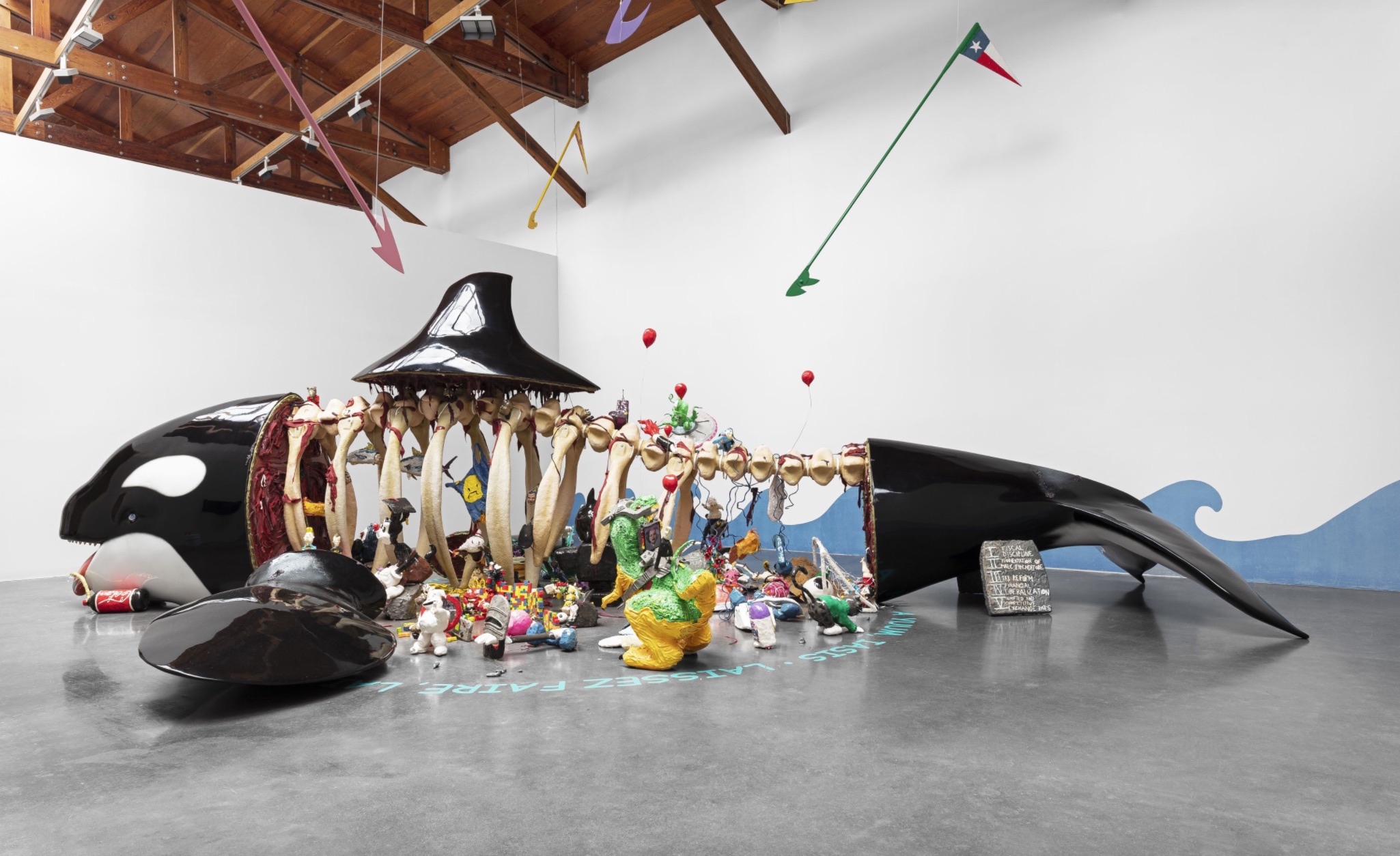
Sa la na, a yuum, iasis / Laissez faire, laissez passer is the title of an installation by Biquini Wax currently stationed in Siembra. It takes up the figure of Keiko, the whale that was held in captivity from 1986 to 1996 in the Mexico City amusement park Reino Aventura. From its exposed entrails sprout a series of moldable foam figures, symbolizing different economic and cultural events that took place in the years that Keiko inhabited Mexican terrain.*4 These pop culture characters and objects form part of a globalized collective imaginary, in which McDonald’s, Nike, and Windows 95 played a central part in many childhoods. The subjective feeling of enunciating oneself based on the individual experience of globality is what Biquini Wax defines as NAFTAlgia.
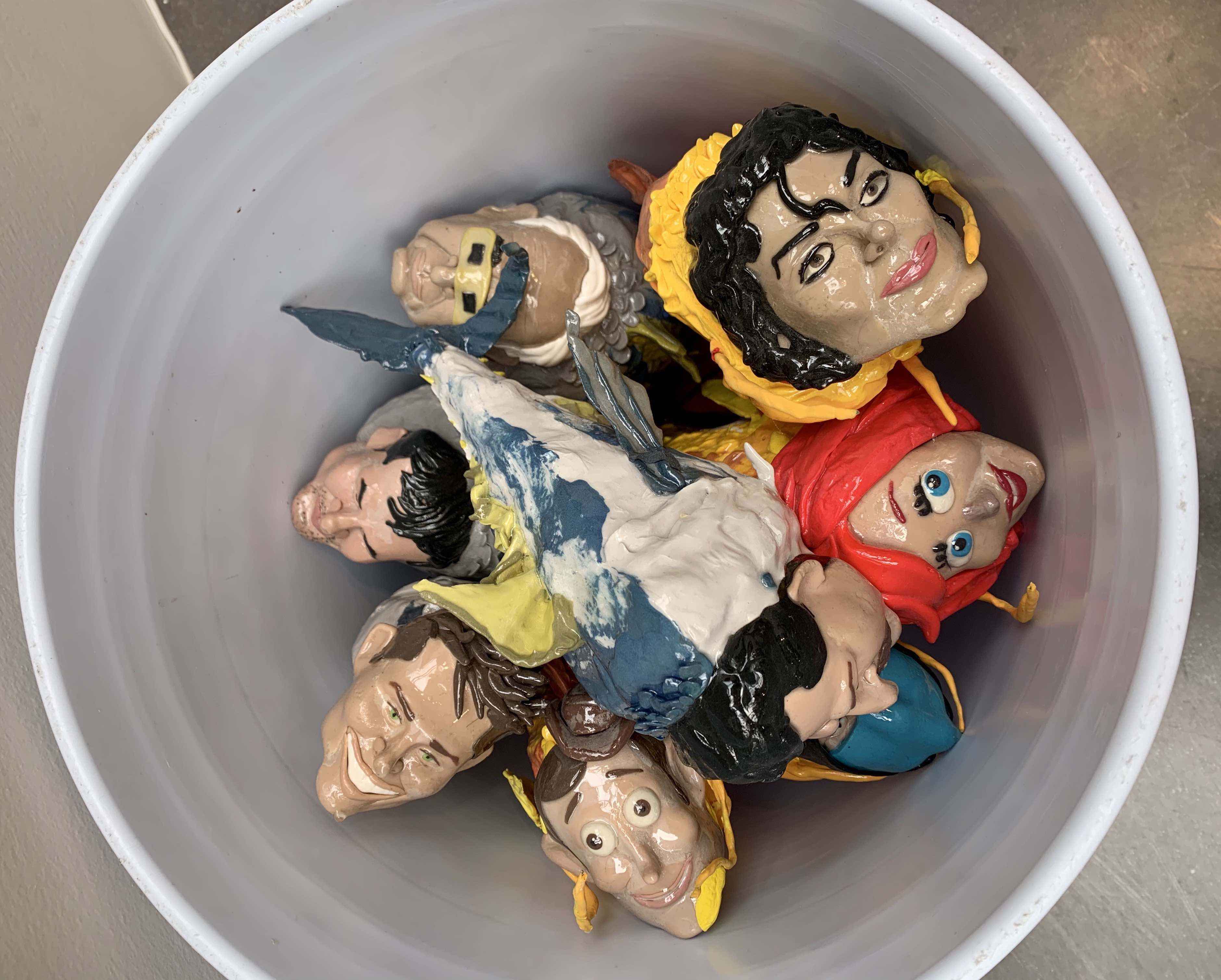
The monumental fiberglass installation, almost of the same dimensions as the real killer whale, was originally conceived for the exhibition Prince·sse·s des villes (2019) at Paris’s Palais de Tokyo. This show brought under the same roof artists, collectives, and galleries from the art scene of global cities considered to be on the periphery. Breaking from colonialist narratives and stereotypes of underdevelopment, there Biquini Wax presented Keiko as a plastic metaphor for the indigestible process of economic policies that perpetuate Mexico’s inequality before hegemonic powers. In addition to the whale itself, two videos accompany the installation, one dealing with the most emblematic moments of the movie Free Willy (1993) and the other showing a humanized version of Keiko, narrating in Cetacean his emotional experience following fame. The reality is that the worldwide success of Free Willy (1993), starring Keiko, gave way to a media campaign for the whale’s release to his supposed “natural” habitat. Nevertheless, after spending his entire life in captivity and serving as entertainment for humans, Keiko never managed to readjust to the wild.
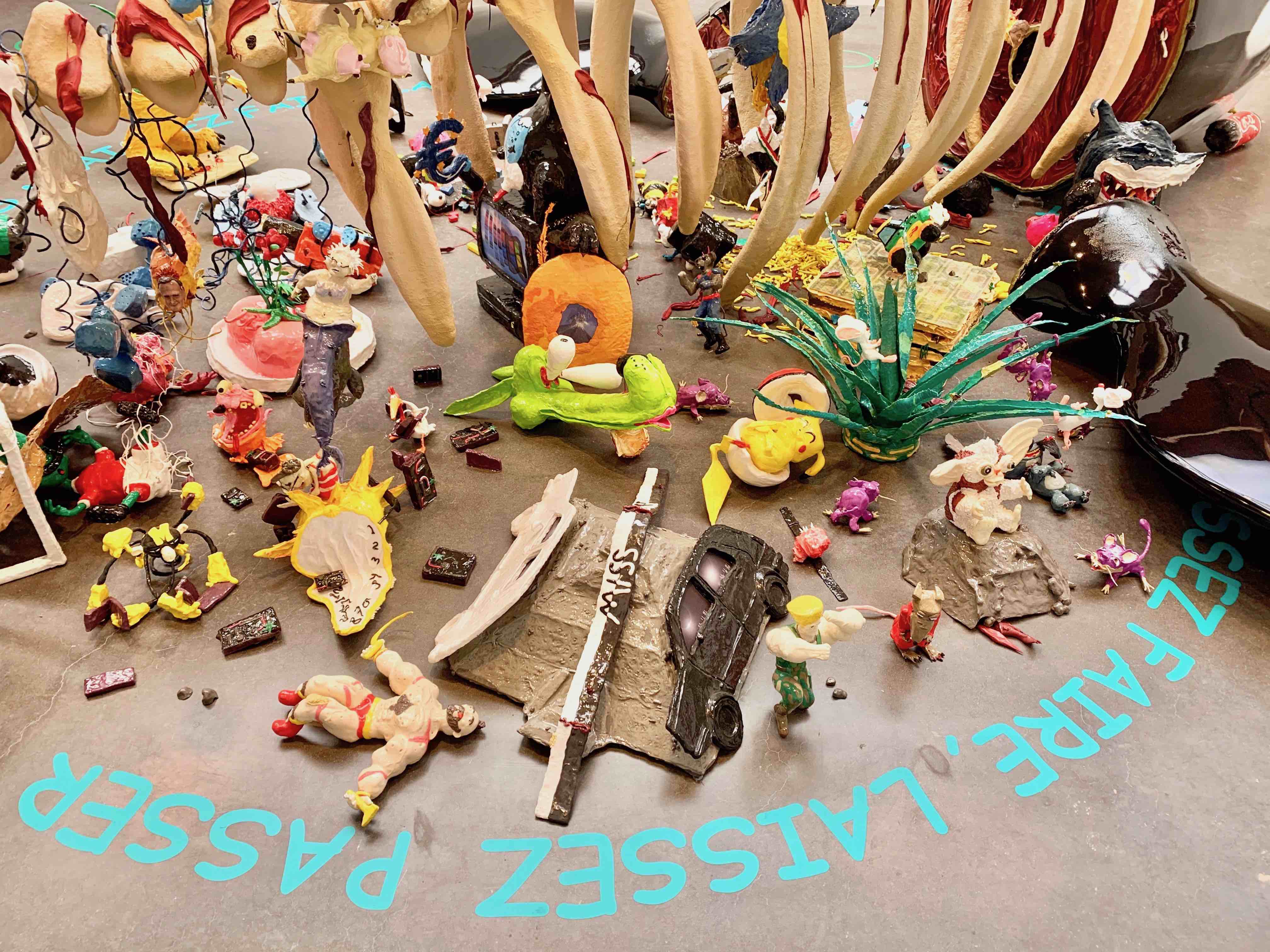
Also within Siembra, Salón Silicón presents SEX, a show divided into three different times and axes: SEXplay, SEXwork, and SEXtrauma. Taking sex as its theme, but putting it in English in reference to the photo book by Madonna and the clothing store once maintained in London by Vivienne Westwood and Malcolm McLaren, the exhibition explores the desire, fetishes, capitalism, power, violence, disillusionment, and disease involved in this activity.
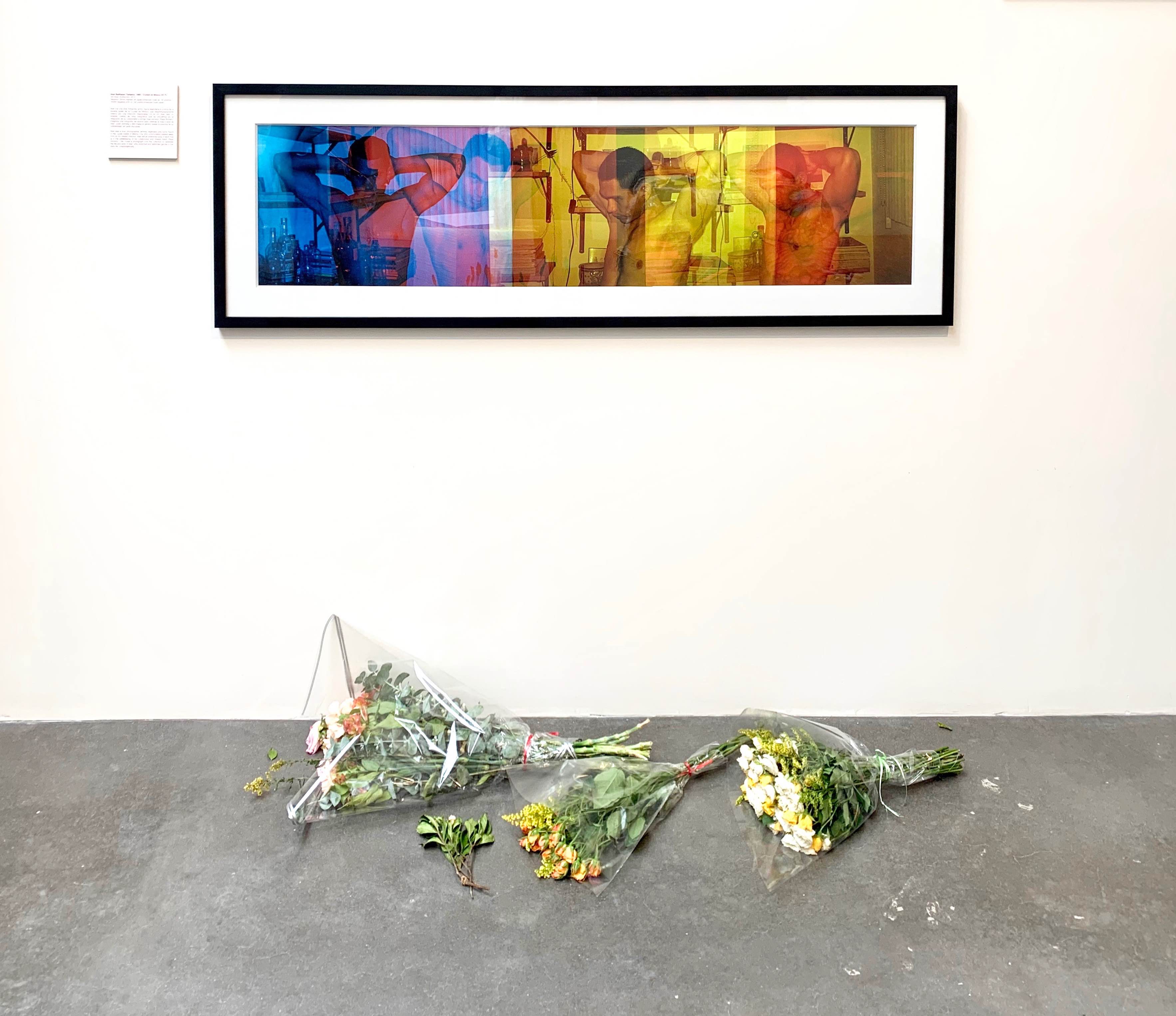
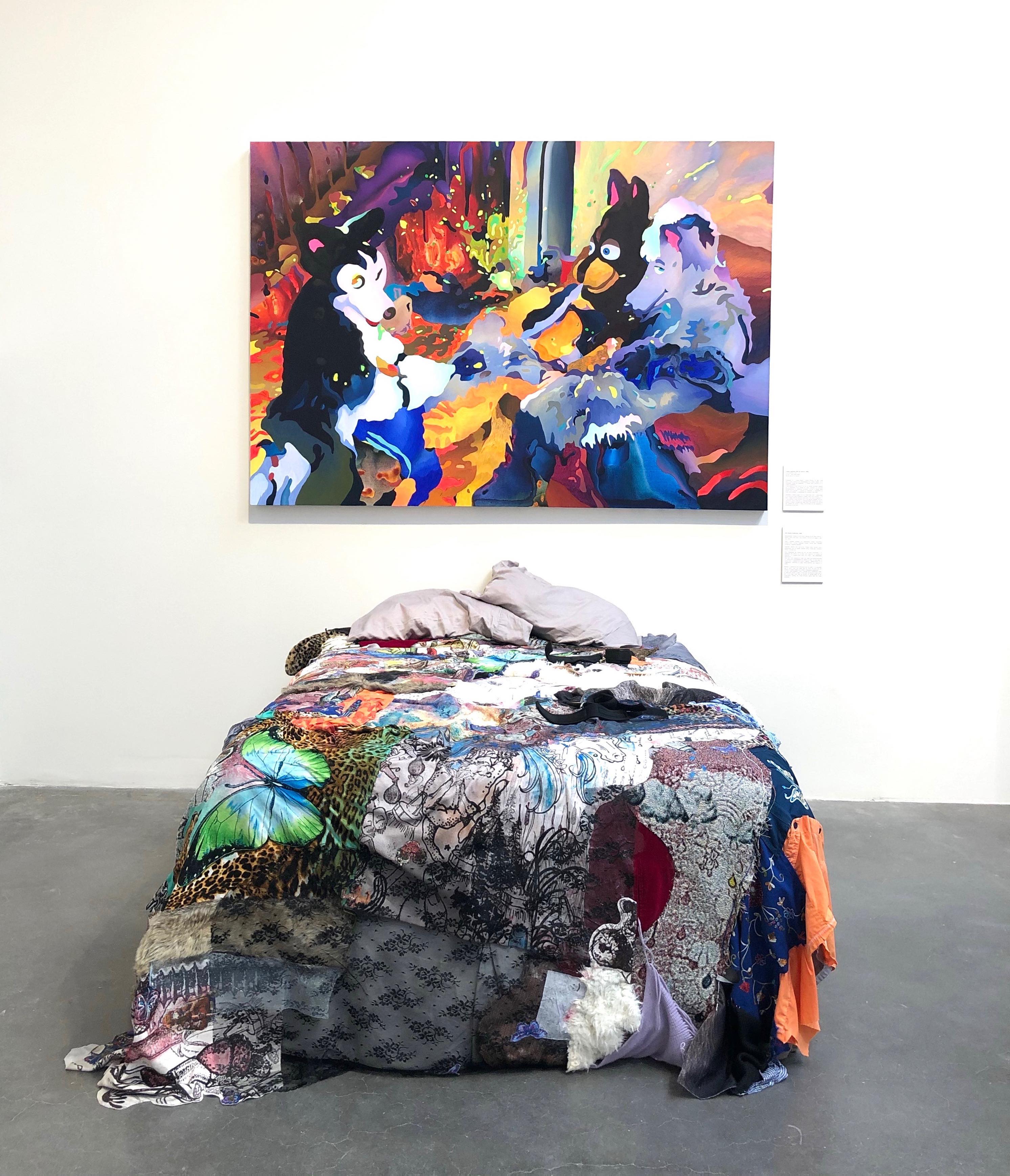
Salón Silicón’s first installment at kurimanzutto is SEXplay, which presents a series of national and international artists who delve into sex’s playful and pleasurable component. Various photographs related to nightlife and intimacy hang on the gallery walls, including one by Alan Balthazar, a late iconic figure of Mexico City queer culture, who passed away from complications related to HIV. Other works in SEXplay take elements from pop culture and the digital age: Romeo Gómez López presents a puppet theater using silicone dolls to stage a fantasized sexual encounter between the singer Shawn Mendes and the rapper Kevin Abstract, thereby denouncing the dark desires of heteronormative society. Lucas Lugarinho shows a vibrant and colorful painting portraying characters from the furry subculture, largely developed by internet communities. On the other hand, Carla Lamoyi resignifies works by kurimanzutto artists through a narration that takes the visitor on an erotic tour, thus removing the works from their usual sacred rationality in order to turn them into objects of lustful enjoyment.
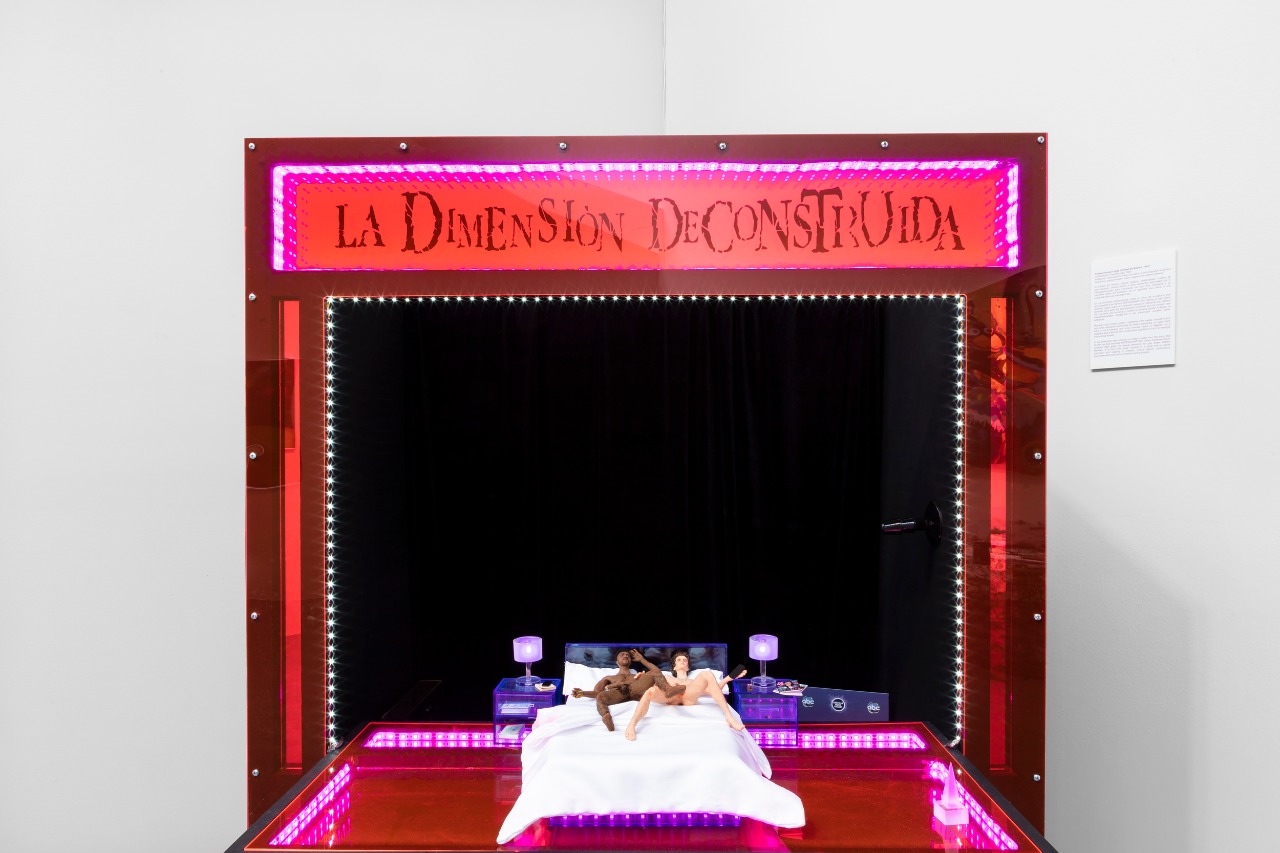
The generation of Biquini Wax and Salón Silicón has lived the effects of economic and cultural globalization: these artists take elements of pop culture as a starting point for critical reflections from which they position themselves. The artists of 90s independent spaces sought to participate in the international contemporary art that was fermenting at that time, but this generation no longer just aspires to be within that circuit, but to respond to the inequities that contemporary art discourse carries with it. This glimpse from a critical distance has led to reflections from postcolonial and queer perspectives, which become especially pertinent when located in a gallery of kurimanzutto’s magnitude.
Some will criticize the incursion of these independent spaces within kurimanzutto as a supposed act of the institutionalization of critique, appealing to art’s purism, its alienation from rampant capitalism and entities of power, or else demanding political activism through art. But how would hegemonic discourses change if the critique were not made from within the same institution? As the artist and critic Andrea Fraser points out, the limit of institutional criticism resides at the very edge of the art field; if completely overthrown, critique would not only cease to have any effect, it would also cease to exist.*5
Recalling again the questions that kurimanzutto poses regarding Siembra, the exhibition space here serves as a fertile ground for thinking about new discourses and ways of working. A space that, through the inclusion of projects like Biquini Wax and Salón Silicón, becomes a terrain for re-thinking and re-negotiating what defines and will define what is understood as contemporary.
More info about Siembra here.
*1 On the concept of the “international language of art,” see Gerardo Mosquera, “Lenguaje internacional del arte” in Caminar con el diablo (Spain: Exit Publicaciones, 2010) pp. 65-69.
*2 Biquini Wax EPS is currently comprised of: Daniel Aguilar Ruvalcaba, Neil Mauricia Andrade, Paloma Contrera Lomas, Gerardo Contreras Vásquez, Gustavo Cruz, Natalia de la Rosa, Cristóbal Gracia, Roselin Rodríguez and Israel Urmeer. It also includes as collaborators Irak Morales and Bernardo Nuñez.
*3 What I’m referring to as “artists of the Centro” are those artists who in the early 90s congregated in Mexico City’s Centro Histórico in places like Salón dès Aztecas and Mel’s Café, as well as on the street of Licenciado Verdad. Among these were Francis Alÿs, Melanie Smith, Silvia Gruner, Thomas Glassford, and Guillermo Santamarina.
*4 For more information on the pieces making up the installation as well as critical texts on the work, see: http://keiko.bw.brokenenglish.lol/inventario/index.html (Last accessed October 21, 2020).
*5 Andrea Fraser, “Cuerpos institucionales” in De la crítica institucional a la institución de la crítica (Mexico City: Siglo XXI, 2016) p. 260.
Cover picture: Romeo Gómez López activating the piece "La Dimensión Deconstruida" at kurimanzutto, 2020 (detail). Photo: Sandra Blow
Translated to English by Byron Davies
Published on October 26 2020